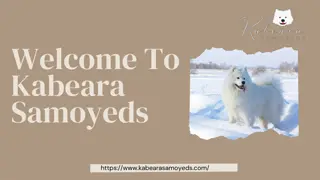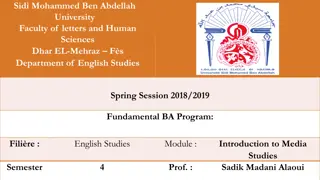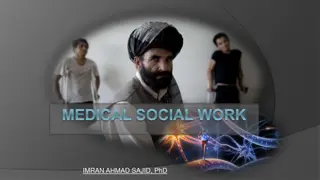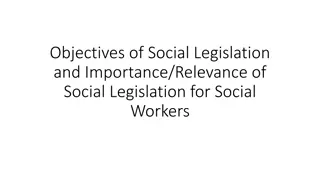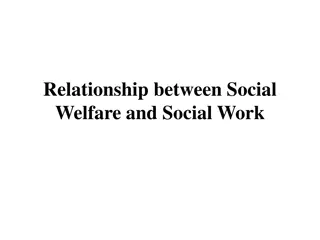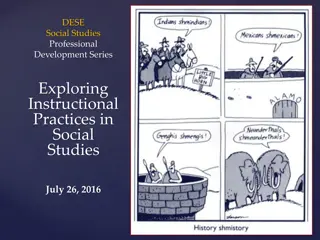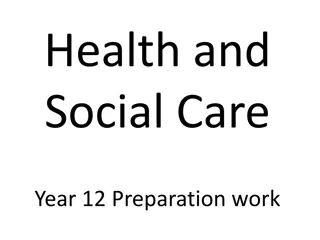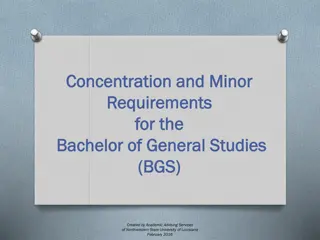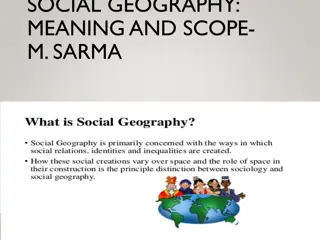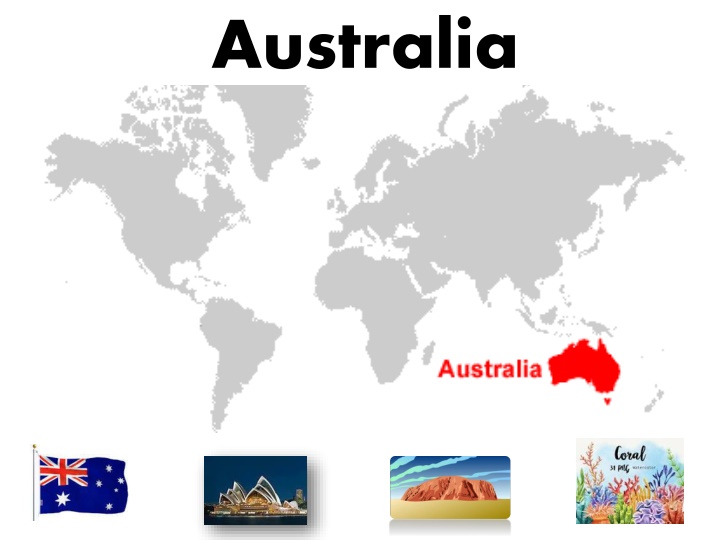
Discovering Australia's Unique Features and Resources
Explore the diverse features of Australia showcased through its iconic landmarks like the Great Barrier Reef and Uluru/Ayers Rock, and its abundant natural resources including bauxite, iron ore, and gold. Understand the impact of location, climate, and resources on trade, population distribution, and Aboriginal rights in Australia.
Download Presentation

Please find below an Image/Link to download the presentation.
The content on the website is provided AS IS for your information and personal use only. It may not be sold, licensed, or shared on other websites without obtaining consent from the author. If you encounter any issues during the download, it is possible that the publisher has removed the file from their server.
You are allowed to download the files provided on this website for personal or commercial use, subject to the condition that they are used lawfully. All files are the property of their respective owners.
The content on the website is provided AS IS for your information and personal use only. It may not be sold, licensed, or shared on other websites without obtaining consent from the author.
E N D
Presentation Transcript
SS6G11 Locate selected features of Australia. a. Locate on a world and regional political-physical map: the Great Barrier Reef, Coral Sea, Uluru/Ayers Rock, Indian and Pacific Oceans, Great Dividing Range, and Great Victoria Desert. SS6G12 Explain the impact of location, climate, distribution of natural resources, and population distribution on Australia. a. Describe how Australia s location, climate, and natural resources impact trade and affect where people live.
SS6H4 Explain the impact of English colonization on current Aboriginal basic rights, health, literacy, and language.
http://upload.wikimedia.org/wikipedia/commons/3/3b/Australia_states_blank.pnghttp://upload.wikimedia.org/wikipedia/commons/3/3b/Australia_states_blank.png A B C Northern Territory D Queensland Western Australia E G Southern Australia F New South Wales B Victoria Indian Ocean (A) Indian Ocean (B) Coral Sea (C) Great Barrier Reef (D) Great Dividing Range (E) Great Victoria Desert (F) Uluru/Ayers Rock (G) A Tasmania Land or water feature
Monday, October 24 Standard: SS6G12 a. Describe how Australia s location, climate, and natural resources impact trade and affect where people live. Learning Target: I can describe how Australia s location, climate, and natural resources impact trade and affect where people live. Warm-up: Chapter 14 Study Guide Work Session: Brain Wrinkles Slides and Notes. Textbook Ch.11 Section. Create Powerpoint Study Guide. Closing: Think-pair- Share Reminders:
Australia is one of the world's leading producers of bauxite (aluminium ore), iron ore, lithium, gold, lead, diamond, rare earth elements, uranium, and zinc. Australia also has large mineral sand deposits of ilmenite, zircon and rutile.
Tuesday, October 25 Standard: SS6G12 a. Describe how Australia s location, climate, and natural resources impact trade and affect where people live. Learning Target: I can describe how Australia s location, climate, and natural resources impact trade and affect where people live. Warm-up: Chapter 14 Study Guide Work Session: Brain Wrinkles Slides and Notes. Textbook Ch.11 Section. Create Powerpoint Study Guide. Closing: Think-pair- Share Reminders:
Wednesday, October 26 Standard: SS6G12 a. Describe how Australia s location, climate, and natural resources impact trade and affect where people live. Learning Target: I can describe how Australia s location, climate, and natural resources impact trade and affect where people live. Warm-up: Video Natural Resources of Australia Work Session: Brain Wrinkles Slides and Notes. Textbook Ch.11 Section. Create Powerpoint Study Guide. Closing: TOD Reminders: 15:07/ 43:18 History of Nations and Peoples Documentaries Full History of Australia - Documentary
Western Australia Iron Ore (WAIO) is an integrated system of four processing hubs and five mines connected by more than 1,000 kilometres of rail infrastructure and port facilities in the Pilbara region of northern Western Australia
Thursday, October 27 Standard: SS6H4 Explain the impact of English colonization on current Aboriginal basic rights, health, literacy, and language. Learning Target: I can describe the impact of English colonization on current Aboriginal basic rights, health, literacy, and language. Warm-up: Video: Colonization of Australia/ Aboriginal Work Session: Brain Wrinkles Slides and Notes. Textbook Ch.11 Section. Create Powerpoint Study Guide. Closing: Think-pair- Share Reminders:
Friday, October 28 Standard: SS6H4 Explain the impact of English colonization on current Aboriginal basic rights, health, literacy, and language. Learning Target: I can describe the impact of English colonization on current Aboriginal basic rights, health, literacy, and language. Warm-up: Australia Practice Map Work Session: Brain Wrinkles Slides and Notes. Textbook Ch.11 Section. Create Powerpoint Study Guide. Closing: Think-pair- Share Reminders:
1788 First Fleet and Convicts First Nations Australian Origins Indigenous Australians have lived in the nation for at least 50,000 years. This means they have the oldest living cultural history in the world. When the British arrived in 1788, as many as 250 different languages were spoken across the nation. Prior to the colonization of the British, there were between 300,000 and one million First Nations people living in Australia. The Dutch first sighted Australia in 1606 before Captain Cook colonized the land for Great Britain in 1770. The First Fleet of 11 boats arrived at Botany Bay in 1788 to establish New South Wales as a penal colony (receiving convicts until 1848). Convicts were later sent to the other states, with the exception of South Australia, which was established as a free colony in 1836. Over 162,000 convicts were transported to Australia from Great Britain, the majority to New South Wales and Tasmania
Historical Understandings SS6H4 Explain the impact of English colonization on current Aboriginal basic rights, health, literacy, and language. Geographic Understandings SS6G11 Locate selected features of Australia. a. Locate on a world and regional political- physical map: the Great Barrier Reef, Coral Sea, Uluru/Ayers Rock, Indian and Pacific Oceans, Great Dividing Range, and Great Victoria Desert. SS6G12 Explain the impact of location, climate, distribution of natural resources, and population distribution on Australia. a. Describe how Australia s location, climate, and natural resources impact trade and affect where people live.
Australia Historical Understandings SS6H4 Explain the impact of English colonization on current Aboriginal basic rights, health, literacy, and language. Geographic Understandings SS6G11 Locate selected features of Australia. a. Locate on a world and regional political-physical map: the Great Barrier Reef, Coral Sea, Uluru/Ayers Rock, Indian and Pacific Oceans, Great Dividing Range, and Great Victoria Desert. SS6G12 Explain the impact of location, climate, distribution of natural resources, and population distribution on Australia. a. Describe how Australia s location, climate, and natural resources impact trade and affect where people live. Government/Civic Understandings SS6CG4 Explain forms of citizen participation in government. a. Explain citizen participation in democratic governments [i.e. the role of citizens in choosing the leaders of Australia (parliamentary democracy)].
Economic Understandings SS6E10 Analyze different economic systems. a. Compare how traditional, command, and market economies answer the economic questions of 1-what to produce, 2-how to produce, and 3-for whom to produce. b. Explain that countries have a mixed economic system located on a continuum between pure market and pure command. c. Describe the economic system used in Australia. SS6E11 Give examples of how voluntary trade benefits buyers and sellers in Australia. a. Explain how specialization makes trade possible between countries. b. Compare and contrast different types of trade barriers, such as tariffs, quotas, and embargoes. c. Explain why international trade requires a system for exchanging currency between nations. SS6E12 Describe factors that influence economic growth and examine their presence or absence in Australia. a. Evaluate how literacy rates affect the standard of living. b. Explain the relationship between investment in human capital (education and training) and gross domestic product (GDP per capita). c. Explain the relationship between investment in capital goods (factories, machinery, and technology) and gross domestic product (GDP per capita). d. Describe the role of natural resources in a country s economy. e. Describe the role of entrepreneurship. SS6E13 Understand that a basic principle of effective personal money management is to live within one s income. a. Understand that income is received from work and is limited. b. Understand that a budget is a tool to plan the spending and saving of income. c. Understand the reasons and benefits of saving. d. Understand the uses and costs of credit.



